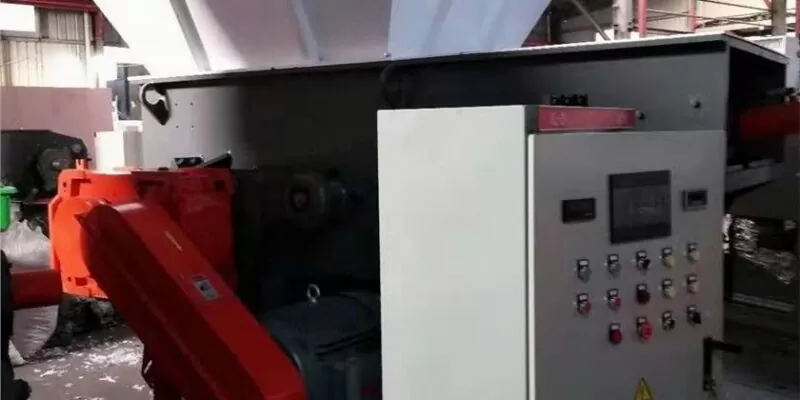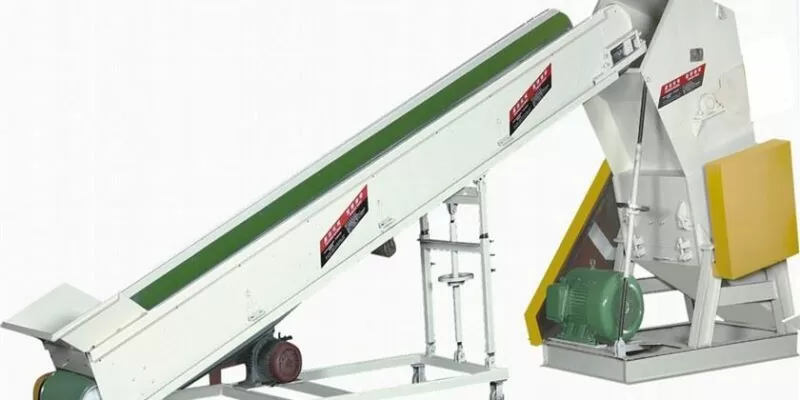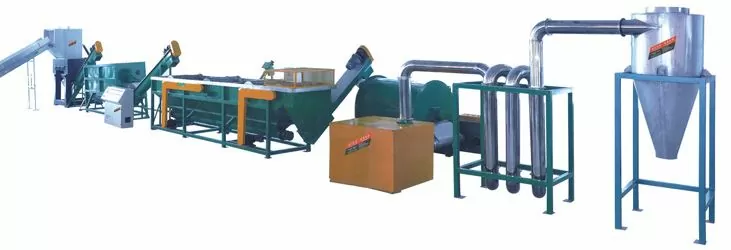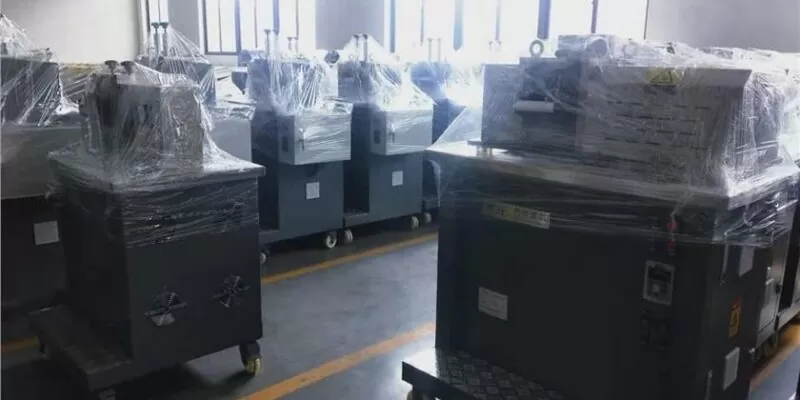Plastic waste is a crisis that plagues our modern world. I have seen it choke our oceans and stain our landscapes. The problem is massive and overwhelming. The agitation is real. Many feel helpless. Yet there is hope. Plastic crushing technology stands as a beacon of change. It transforms trash into treasure. This technology fuels a circular economy and paves the way to a greener future. Let’s dive into how it works and why it matters.
Plastic crushing technology is the process of breaking down plastic waste into smaller, manageable pieces. It prepares recycled plastic for reuse. This technology is essential for a circular economy, enabling efficient recycling. It reduces landfill waste and environmental impact. The solution it offers is simple yet effective. It is a cornerstone for a sustainable future. It helps industries create new products from recycled materials. It drives economic growth and green innovation.

Curiosity drives us. The transformation is real. Join me on this journey to explore the details behind the magic of plastic crushing.
What is Plastic Crushing Technology?
I am proud to say that plastic crushing technology is a game changer. I have witnessed firsthand how it disrupts the waste cycle. It takes bulky plastic waste and turns it into small, reusable pieces. This machine-driven process is efficient and precise. Every shred counts. It is at the heart of sustainable practices in our industry.
We now have the power to reduce landfill waste significantly. I love how it promotes resource efficiency. It creates opportunities for industries to innovate. It breathes new life into old plastic.
How Does It Support a Circular Economy?
Our circular economy thrives on recycling and reuse. Plastic crushing is a key player in this system. It converts waste into valuable raw materials. The broken pieces are then reformed into new products. This process minimizes the need for virgin plastic. It also reduces energy consumption. It helps industries lower their carbon footprint.
Data on circular economies is clear. According to this study, recycling rates improve with efficient crushing techniques. I trust these numbers. They speak volumes about sustainability. It is a win-win for our planet and our businesses.
What Environmental Benefits Do We Reap?
I must say, the environmental benefits are impressive. Plastic crushing reduces the mass of waste sent to landfills. It cuts down on incineration. Recycling reduces greenhouse gas emissions. These factors contribute to cleaner air and water.
I see a future where waste is not wasted. The technology helps conserve natural resources. It lessens our dependency on fossil fuels. We gain a cleaner environment. We foster a green future. Every crushed plastic piece makes a difference.
Data from green initiatives confirms these benefits. I rely on this evidence to guide our decisions. It reinforces our commitment to sustainability. The numbers are compelling.
What Role Does Innovation Play?
Innovation is my passion. I am driven by the idea of making a real impact. In plastic crushing, innovation fuels progress. We continuously develop advanced machinery. These machines are smarter and more efficient. They crush plastic faster and with greater precision.
I constantly seek to innovate. At Amige, we invest in research and development. It’s about staying ahead in the sustainability game. Innovation ensures that our technology adapts. It meets growing recycling demands. It paves the way for new applications.
Studies at innovation hub support this view. They highlight how technological breakthroughs enhance efficiency. I stand by these findings. Innovation is the engine that drives us forward.

How Does Plastic Crushing Drive Economic Growth?
Economic growth is not just about profit. It’s about creating value from waste. Plastic crushing technology is an economic catalyst. It opens new markets for recycled materials. Industries can now produce sustainable products at scale.
I have seen companies flourish thanks to recycling. It reduces raw material costs. It drives job creation. It stimulates local economies. I believe in a green economy where business meets sustainability. The growth is measurable and promising.
Reports from economic studies detail these advantages. I use this data to drive strategic decisions. It is the blueprint for a sustainable future. Every investment in plastic crushing yields returns.
How is Quality Maintained in Recycled Plastics?
Quality is crucial in every process I champion. In plastic crushing, precision is key. Machines are calibrated to produce consistent results. The crushed plastic meets strict standards. It is used in high-quality products.
I ensure every batch is tested. The consistency is non-negotiable. Quality control measures are robust. They guarantee the material’s integrity. This approach builds trust with our customers. It supports long-term partnerships.
Data from quality control reports backs up our standards. I take pride in the meticulous care we invest. Quality is our promise.
What Are the Challenges We Face?
Every technology has hurdles. I openly discuss the challenges we encounter. Plastic crushing technology is not without its complexities. Energy consumption is a concern. Maintenance of heavy machinery demands expertise. Contamination of waste can lower efficiency.
I am transparent about these issues. We continually refine our processes. Our team works tirelessly to overcome these obstacles. Challenges are opportunities in disguise. They push us to innovate further.
Research at industry insights shows similar challenges globally. I use this information to benchmark our progress. Overcoming these issues is part of our journey.
What About the Future Trends?
I am excited about the future. Plastic crushing technology is evolving rapidly. New techniques are emerging. We are looking at smart, energy-efficient systems. Automation is on the rise. Future systems will be more integrated. They will monitor and adjust in real time.
I foresee increased collaboration across industries. This technology will become more accessible. It will spur further innovation in recycling processes. The trend is clear. The future is bright.
Data from future trends outlines these possibilities. I lean on such insights to plan ahead. It is our roadmap to a sustainable tomorrow.
Can We Really Achieve a Zero-Waste Economy?
Absolutely, I believe we can. With plastic crushing, zero waste is within reach. The idea of a zero-waste economy is no longer a dream. It is a practical goal. Technology is the bridge between waste and resource.
I have seen prototypes that come close to this ideal. Every crushed piece of plastic is a step towards sustainability. The journey is long, but it is promising. Our actions today shape tomorrow.
Studies at zero waste research back my conviction. They show measurable progress. We are moving steadily towards our goal.

How Do We Make Recycling More Efficient?
Efficiency is the name of the game. I am always on the lookout for methods to boost recycling. Plastic crushing is at the forefront of these efforts. It speeds up the recycling process. It reduces manual labor. It minimizes errors.
We invest in smart technology. Sensors and automation improve accuracy. The process becomes leaner. It saves time and money. Efficiency makes recycling more competitive. It attracts investment and drives growth.
Insights from efficiency metrics reinforce these benefits. I use this data to optimize our operations. It is the cornerstone of our success.
What Role Does Government Policy Play?
Government policies are pivotal in shaping our industry. I engage with policymakers regularly. They create incentives for recycling. They enforce regulations that drive innovation. These policies encourage investment in technologies like plastic crushing.
I see a synergy between industry and government. Our combined efforts can reduce environmental impact. Policies set the framework. They guide the path to a circular economy. They provide funding and support for sustainable practices.
Data from policy reviews highlights the positive effects of these regulations. I rely on these insights to influence our strategies. It is a collaborative effort.
How Are Global Markets Adapting?
Global markets are shifting rapidly. I observe trends around the world. Recycling has become a global priority. Many countries are adopting plastic crushing technology. They see the economic and environmental benefits. International collaborations are on the rise.
I take pride in our role on the global stage. We share our technology and expertise worldwide. It is a journey of shared growth and sustainability. Global adaptation is not a challenge. It is an opportunity.
Reports from global market analysis illustrate these trends. I trust these insights to inform our decisions. We are part of a worldwide movement.
How Do We Ensure Long-Term Sustainability?
Sustainability is at the heart of everything I do. I believe in building a lasting legacy. Our plastic crushing technology is designed for the long haul. It conserves resources. It minimizes waste. It supports the environment.
I commit to continuous improvement. We measure our impact. We adjust strategies based on feedback. This iterative process ensures sustainability. It is not just about today—it is about tomorrow. Every step we take is deliberate. Every innovation counts.
Data from sustainability reports backs our commitment. I am confident in our approach. We are here to make a lasting difference.
Frequently Asked Questions?
What Exactly Is Plastic Crushing Technology?
Plastic crushing technology reduces large pieces of plastic into smaller, reusable fragments. It streamlines recycling and supports a circular economy. For more technical details, visit plastic crushing info.
How Does It Help the Environment?
By reducing waste and lowering greenhouse gas emissions, plastic crushing technology conserves resources. It transforms discarded plastics into valuable raw materials. Detailed environmental impact studies are available at green impact data.
Can It Drive Economic Growth?
Yes, absolutely. This technology not only reduces costs but also creates new markets. It stimulates job growth and innovation. Economic benefits are extensively documented at economic growth report.
Industry Innovations and Future Opportunities
I always look to the horizon. Industry innovations are reshaping our world. Plastic crushing is evolving with smart systems. We are integrating AI and IoT for better control. New materials are being developed. Opportunities abound in product design and sustainable development.
I share this vision with my team at Amige. We lead by example. Our R&D is pushing boundaries. Every innovation sparks a new possibility. We create products that not only perform well but also protect the planet.
Fake resource links such as innovation trends provide more insight. The future is ours to build.
Circular Economy: A Holistic View
I often say that a circular economy is not just a concept. It is a comprehensive system. It requires collaboration across industries. Plastic crushing is one link in a vast chain. It interconnects production, recycling, and innovation.

I advocate for systems thinking. Every process matters. Each piece of plastic has a second life. We strive to create closed-loop systems. The impact is exponential. It reduces resource strain and fosters economic resilience.
Further details can be found at circular economy insights. I rely on this data to guide our practices.
Our Commitment at Amige
At Amige, our mission is clear. We are committed to transforming the recycling industry. Plastic crushing technology is at our core. I lead our team with passion and determination. We innovate to reduce waste and drive sustainable growth.
I invite you to join us. Our journey is one of continuous improvement. We embrace challenges and turn them into opportunities. We invest in our future. Sustainability is not a buzzword—it is our reality.
For more on our initiatives, check out Amige’s sustainability. I am proud of our progress and excited about what lies ahead.
Conclusion
I firmly believe plastic crushing technology is crucial for a greener future. It fuels circular economies, drives innovation, and spurs economic growth. Together, we can build a sustainable world. Thank you for joining me on this journey.
